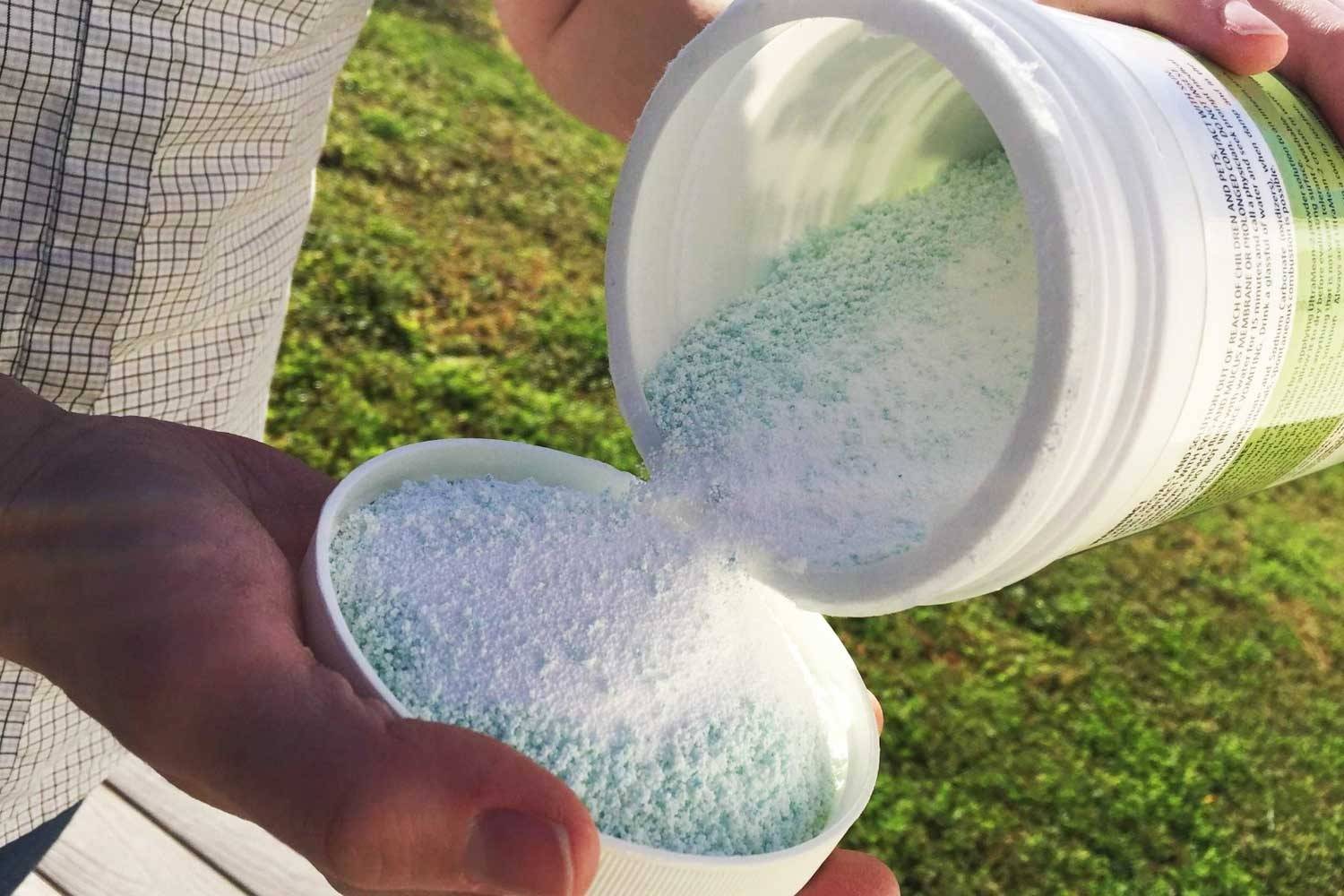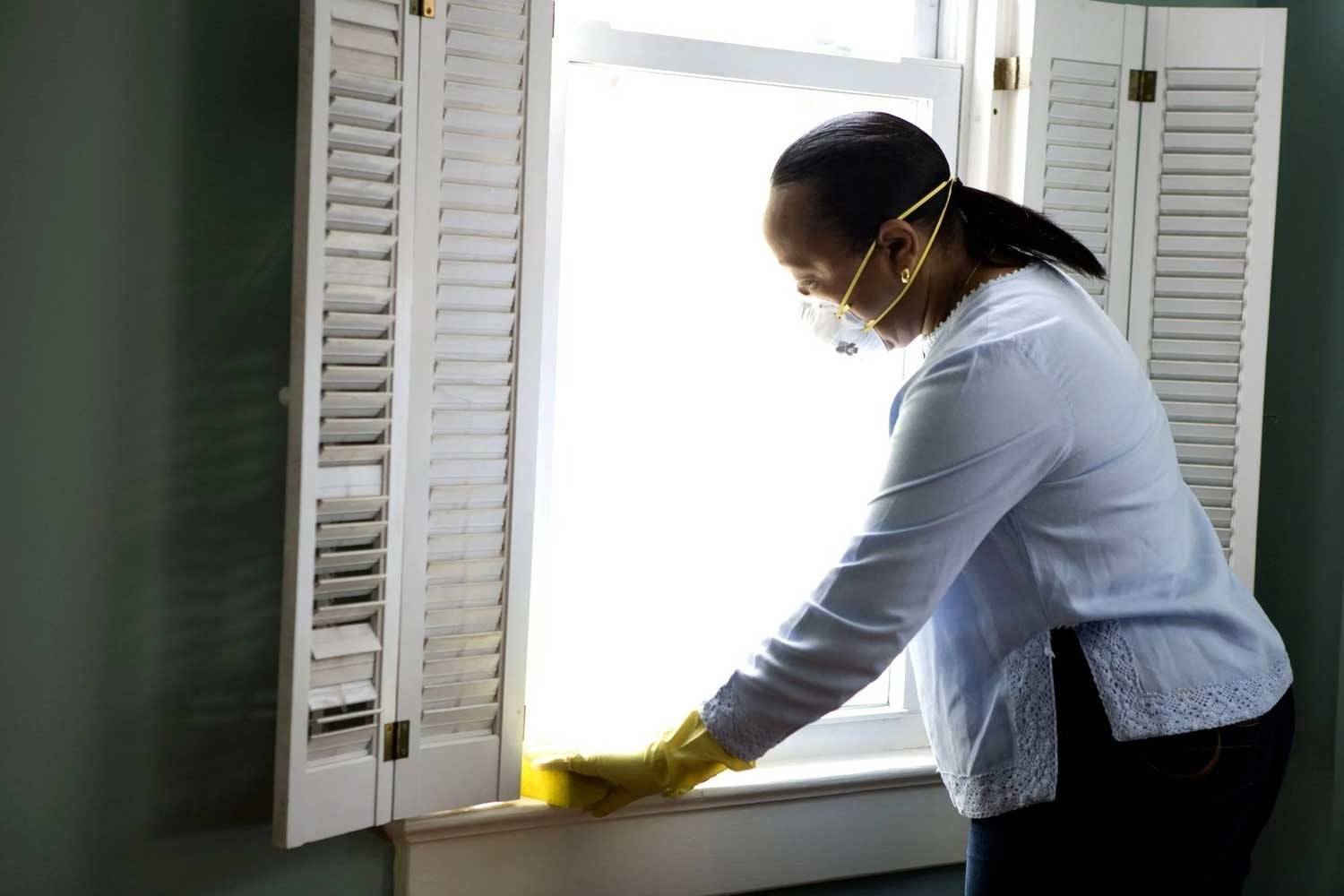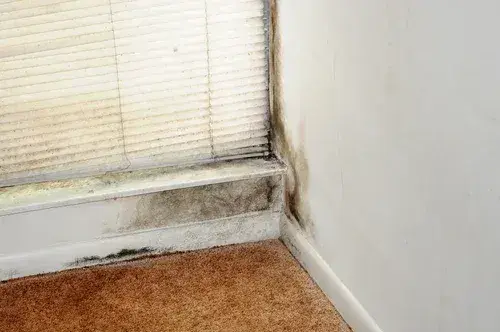You are undoubtedly familiar with oxygenated cleaners, or oxygen bleach. Infomercials tout the benefits and miraculous cleaning powers of oxy-this, and oxy-that. While there can be widely variable results, as well as uses, for these types of cleaning products, they are not all made using the same ingredients. Oxygenated bleach has become the go-to house cleaning product, for both exterior and interior purposes, because it will not harm you, your pets, or your plants. Also, it will not discolor decking, vinyl siding, or painted surfaces.
Of these Sodium percarbonate is the most popular of these active ingredients, because of its benign properties.
Oxygenated bleach made from sodium percarbonate is an environmentally friendly, non-toxic disinfectant. Color safe, and gentler in every regard to chlorine bleach, the EPA has recognized it to be an effective mold, mildew, and contaminant remover. Sodium perborate is an oxidizing borate compound, often found in laundry detergent and tooth whitener. Depending on its level of concentration, hydrogen peroxide can be an effective cleaning agent (in liquid form), or a highly combustible propellant in powder form. All of them, used properly, will release oxygen to clean stains by decolorizing them.
Sodium percarbonate is the most popular of these active ingredients, because of its benign properties. This highly concentrated powder is, essentially, soda ash and hydrogen peroxide. If hydrogen peroxide breaks down into oxygen and water, sodium percarbonate breaks down into oxygen, water, and soda ash.
How, then, does it work?
When combined with water (and you’ll want it to be fully immersed and dissolved), the oxygen becomes effervescent. The oxygen bubbles, faintly hissing and popping like a breakfast cereal in milk, break the bonds between surface and stain, pulling the stain from the surface, as well as disinfecting and deodorizing the area. Applied correctly, oxygenated bleach breaks down all organic stains and bacteria. This is an important distinction from other cleaners. You might not want to use it to clean synthetic oil stains, but for any organic stain, even mold, this is a safe and proven method for cleaning and disinfecting.
Manufacturers of sodium percarbonate cleaners add fragrances, detergents, and other surfactants. The higher the percentage of the active ingredient, the greater the level of bleaching action. Of course, too much of anything can be a bad thing. Sodium percarbonate is more effective at some pH levels than others. Mixing at higher water temperatures will affect results, as well.
When using any oxygenated cleaner, following directions is important. The good news, though, is that you can feel confident in both the efficacy, and safety, of a sodium percarbonate-based cleaner.





